While most LEGO fans are perfectly happy with providing an awesome LEGO-built world for their minifigures, some people decide to bring LEGO up to human scale, and create wearable costumes and accessories for a bit of magic. While this is a lesser-known area of the hobby, human size LEGO costumes are quite popular at conventions.
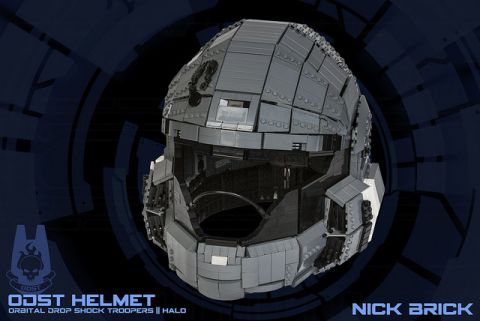
Life-size cars, houses, spaceships, furniture, movie characters, giant dragons, and replicas of pretty much any real-life object can be recreated in LEGO, and they have been done so already. As long as the project is mostly static, rigid, and has a substantial bulk that can support itself, you just need enough LEGO bricks and a bit of engineering skill to build them.
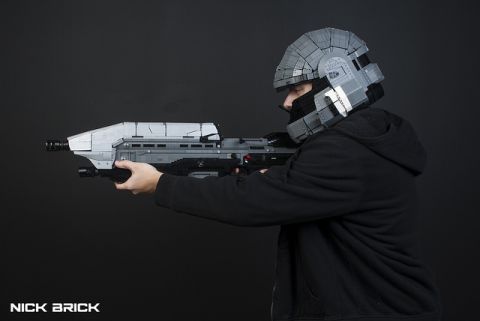
Wearable LEGO costumes however come with an extra set of challenges; they need to remain thin enough and flexible enough to use as a costume. There are a number of clever locking techniques to make a LEGO creation more stable, but they are designed to be used in smaller creations. On a larger scale, they would add too much bulk. And the more bulk you add, the more you increase weight, and reduce flexibility. Most people get around this by just building the most identifying features of a costume out of LEGO, and then attaching them to a flexible material. So for example a belt, chest-plate, or shoulder-armor would be built out of LEGO, which is then attached with Velcro strips to a regular piece or clothing. This keeps the character identifiable, and the costume not too fragile or clumsy. As an example, take a look at the Boba Fett costume below by SIMAFOL.
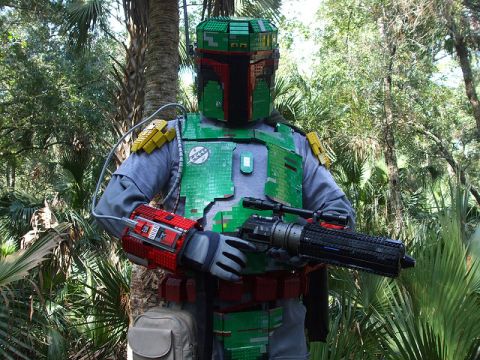
There are some new pieces however that were first introduced in the LEGO Mixels line, that makes LEGO costume building a lot easier, and even opens up new possibilities. I’m talking about these small ball-joint pieces that already revolutionized LEGO mech building. And this is why I wanted to show you the Halo ODST helmet created by LEGO fan Nick Brick. Take a look at the skeleton of the helmet below; it is entirely supported and shaped by those small ball-joints without adding much bulk. While you may not be into Halo, this same structure could be used for any headwear or body-wear, so it is quite a significant discovery.
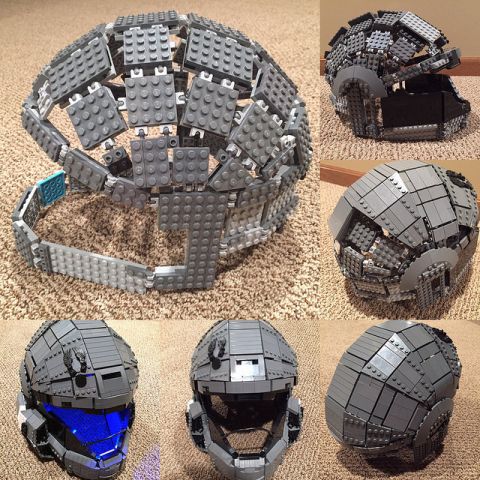
Once the skeleton of the helmet is put together, you can dress it up any way you like by using plates, tiles, and wedge pieces, and even add lights and other features as Nick Brick has done. No glue or other non-LEGO materials have been used to keep the helmet together. It weighs four pounds, and took ten days to build. Below I have also included a video-demonstration for you of the helmet.
Pretty awesome, isn’t it? If you have any LEGO Mixels characters lying around, you might be inspired to start building your own helmet right away! Again, it doesn’t have to be a Halo helmet (although it is definitely very cool), it can be any type of headgear, or other piece of body-wear that needs flexibility. So start dreaming and creating! I expect that we will see a lot more LEGO costumes as people discover the usefulness of those small ball-joints!

Nick Brick is also very well known for his amazing human-size LEGO weapons from video-games and movies, so you might want to check out his YouTube channel for more. And if you want to pick up some LEGO Mixels for your own LEGO costumes (remember, the theme is going to get retired after this last wave), they are available under the LEGO Mixels section of the Online LEGO Shop.
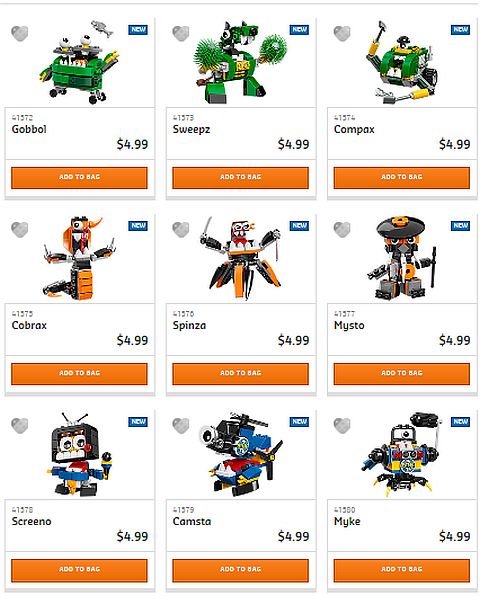
What do you think? How do you like this Halo ODST helmet? Are you interested to build something similar yourself? Or what other wearable LEGO costume pieces you would like to build? Feel free to share your thoughts and ideas in the comment section below! 😉
And you might also like to check out the following related posts:












Very interesting. The helmet frame looks very doable. I might try this out. Those Mixels joints are definitely useful to make complex, flexible and durable connections. The blue light looks great too! Do you know what brand it is?
I think I remember reading on one of his pictures that the light was from BrickStuff. They are very good quality lights. I wrote a review on them here: http://thebrickblogger.com/2015/05/light-up-your-lego-models-with-brickstuff/